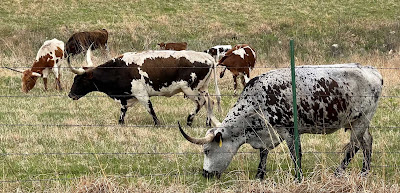.jpg) |
| Lilac 'Betsy Ross' |
At last, Spring has arrived in Manhattan, Kansas. It is and was a long-awaited, miss-conceived, desiccated Spring, but I'm declaring Spring nonetheless. I have to, for if I waited any longer, I'd be in mid-summer and sweltering. This is no longer a Spring of a few wee annual bulbs now, this is full-blown everything growing Spring. No spring rains yet, but hopefully the ground will get re-saturated before July steals it all away. There is plenty of wind blasting past, however, wind that kept me awake all last night and wind that has kept my roof from being repaired for over 3 months since the December gales that lifted a few shingles. And frosts galore, frosts that ruined my annual celebration with
Magnolia stellata and has dampened the impact of purple 'Ann' this year.
.jpg) |
| 'Betsy Ross' |
I was struck, two mornings ago, by the morning light and beauty of my awakening back yard. Color drew me out to take the photograph above, pastels and spring pinks, a cool morning but sufficient to celebrate the collage of spring colors in the back yard; volunteer redbud in the foreground, occasional blush of magnolia in the borders, my red peach in full bloom in the back. And the houses on the ridgeline south, across the golf course, visible now, but invisible to my inner eye which still sees the bare hilltops I used to see here.
My primary focus this morning is on my lilac line, the end of the garage pad at the house, beloved pink and white 'Annabelle' at the back. Some are in full bloom, some just partially open and others yet to start, but a mere whiff of air on that side of the house saturates you with lilac and converts every racing thought to a lazy dream. The "Most Spectacular" award this year goes to
Syringa oblata 'Betsy Ross', a 2000 U.S. National Arboretum introduction from the 1970's breeding program of Dr. Donald Egolf. My 'Betsy Ross', planted in 2013 and photographed this cloudy morning. She is certainly now well worth the Andrew Jackson photograph I traded for her when she was a small plant. Perfect white panicles, non-damaged this year by frost, wind or rain, and as fragrant as a bottle of perfume. I can't ask for more.
It is, in fact Spring outdoors and indoors right now. This rare (I think) yellow Christmas cactus is now blooming for the third time since November, and the colors are even more rich and deep than it's first bloom. Fully 80% of my Christmas cacti are still cycling bloom, months and months of delicate color to fill the sunroom.
I leave you, this cloudy morning of Spring, with the last of the daffodils that live in the coldest, darkest, northern exposure of my landscape. Last to bloom, they are protected there from wind at the least, perfect blooms and cheery faces to remind me they will be back next year again. Yes, we've had a few sprinkles this morning to brighten them up, but the ground beneath is bone dry, crying for moisture, for the re-quenching rains that should come with Spring. Is that still too much to ask for?
.jpg)


.jpg)
.jpg)
.jpg)











.jpg)

.jpg)
.jpg)

.jpg)
.jpg)
.jpg)
.jpg)
.jpg)
.jpg)
.jpg)